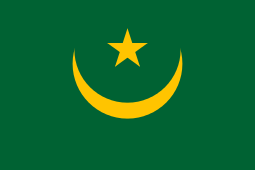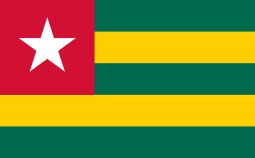Panhard M3
| Panhard M3 | |
|---|---|
|
M3 VTT at Tempe School of Armour, Bloemfontein | |
| Type | Armored personnel carrier |
| Place of origin | France |
| Service history | |
| Used by | see operators |
| Wars |
Angolan Civil War Lebanese Civil War Western Sahara conflict Second Malayan Emergency Internal conflict in Burma Iran–Iraq War Gulf War Iraq War Yemeni Civil War (2015) |
| Production history | |
| Designed | 1969 |
| Manufacturer | Panhard |
| Produced | 1971–1986 |
| Number built | 1200 |
| Variants | see variants |
| Specifications | |
| Weight | 6,100 kilograms (13,400 lb) |
| Length | 445 centimetres (175 in) |
| Width | 240 centimetres (94 in) |
| Height | 248 centimetres (98 in) |
| Crew | 2 |
| Passengers | 10 |
|
| |
| Armor | 8-12 millimetres |
Main armament | see armament |
| Engine |
Panhard 4 HD 90 horsepower |
| Power/weight | 14.75 hp/t |
| Payload capacity | 1,360 kilograms (3,000 lb) |
| Ground clearance | 35 centimetres (14 in) |
| Fuel capacity | 165 litres (44 US gal) |
Operational range | 600 kilometres (370 mi) |
| Speed | 90 kilometres per hour (56 mph) |
The Panhard M3 VTT (French: Véhicule de Transport de Troupes), armoured personnel carrier was designed as a private venture with the first prototype completed in 1969. The prototype had a single door in each side of the hull and twin doors in the hull rear. Mounted on the top of the hull was a Giat Industries one-person manually operated turret armed with a 7.5 mm AA-52 machine gun.
The first production vehicle, had a redesigned hull incorporating three hatches on either side of the troop compartment, and was completed in 1971. The Panhard M3 armoured personnel carrier shares 95% of its working parts with the Panhard AML armoured car, encouraging many countries to employ both the M3 and the AML in order to reduce operational costs.
The M3 VTT was subsequently replaced in production by the Panhard VCR. It remains one of the most common Western-built wheeled armoured personnel carriers in the world.[1]
Description
The hull of the Panhard M3 is made of all-welded steel armour. The driver is seated at the front of the vehicle and has a single-piece hatch cover that opens to the right and in which there are three day periscopes. The centre one can be replaced by an image intensification periscope for night driving. The Panhard 4 HD engine is behind the driver.
The suspension at each wheel station consists of coil springs and hydropneumatic shock-absorbers acting on the suspension arms of the wheel mechanism. The tyres have puncture-proof Hutchinson inner tubes.
There are four doors in the M3, one in each side of the hull and two in the rear. The rear doors both have a circular firing port. Along the upper part of each side of the hull are three hatches hinged at the top that can be locked open. The Panhard M3 can carry 10 troops in addition to its crew of two, or it can carry 1,360 kg of cargo.
There are two circular hatches in the roof, one behind the engine compartment and a second one at the rear with a single-piece hatch cover. A wide range of armament installations could be mounted on the forward position; typically these are a 7.62 mm or a 12.7 mm machine gun, but some users have fitted a turret-mounted 20 mm cannon.
The basic M3 is fully amphibious without preparation. It is propelled in the water by its wheels at a speed of 4 km/h, but it can operate only in lakes and rivers. Steering, when afloat, is by turning the front wheels as on land. Optional equipment includes an air conditioning system and smoke grenade dischargers.
Variants
- M3 VTT: The VTT (Véhicule Transport de Troupes), is the main armoured personnel carrier variant.
- M3 VDA anti-aircraft vehicle: The VDA (Véhicule de Défense Antiaérienne) is a modified M3 chassis fitted with a turret armed with twin 20 mm cannon and a day sight, with the option of an RA 20 series radar on the turret rear. One M3 VDA with the radar can control two other systems without the radar. In service with Côte d'Ivoire (6), Niger (10) and the United Arab Emirates (Abu Dhabi) (48).
- M3 VAT repair vehicle: The VAT has a crew of five (commander, driver and three mechanics) and equipment fitted includes a pulley block with struts and tackle, cutting equipment, a generator, benches, a vice, towbars, tow cables and a complete range of tools.
- M3 VPC command vehicle: The VCP has additional communications equipment, two additional batteries and map tables. Its basic crew consists of commander, assistant commander, driver and two radio operators plus command staff.
- M3 VLA engineer vehicle: The VLA is fitted with a removable hydraulically operated dozer blade at the front of the hull and has a crew of six consisting of commander/gunner, driver, pioneer section commander and three pioneers.
- M3 internal security vehicle: Is fitted with a front-mounted obstacle clearing blade and other equipment for use in the internal security role.
- M3 VTS ambulance: The VTS has a crew of three (driver and two orderlies) and can carry four stretcher patients, six sitting wounded or two stretcher patients and three sitting wounded. It is unarmed and has a large single-piece door in the rear of the hull.
- M3 VSB radar: The VSB is fitted with a variety of radar systems such as the RASIT battlefield surveillance radar or RA-20S air surveillance radar. The latter is used with the M3 VDA twin 20 mm self-propelled anti-aircraft gun system when this is not equipped with its own individual radar.
- M3 VPM: Turret with breech-loading 81 mm mortar.
- M3 VTT 60 B: Armed with 60 mm Hotchkiss-Brandt CM 60 A1 smoothbore breech-loading mortar.
Upgrades
Saymar M3 APC
The Israeli company of Saymar have completed development and testing of a new automotive upgrade package for the Panhard M3. Saymar have replaced the old petrol engine with a more fuel-efficient Toyota 2L-T diesel engine developing 102 hp. Other sub-systems upgraded include the manual transmission, new engine cooling system, new and improved electrical system, new disc braking system all round, hydraulic powered steering, new turret electrical system, communications and intercom system. All new electrical components include more reliable electrical wire bundles, electric voltage regulator, 24 V 65 A generator, 24 V starter, new drivers panel and new instrumental panel. This upgrade can be carried out in the user's own facilities with the aid of kits provided by Saymar or the company could carry out the work in its own facilities. This upgrade package could also be combined with a general overhaul of the vehicle to bring it up to an almost new build standard.
Irish army upgrade
In 1983 Irish army tested a M3 fitted with a 140 hp Peugeot V6 petrol engine. The test was successful, and 14 Irish Panhard M3s were rebuilt with the new engine as well as a new Citroën braking system, a 6-speed manual gearbox and new electrics.
Armament
- TL.2.1.80 turret with twin 7.62 mm FN MAG machine guns.
- TL.52.3.S turret with one 7.62 mm machine gun and three LRAC F1 anti-tank rocket launcher.
- TL.52.S turret with one 7.62 mm machine gun and one LRAC F1 anti-tank rocket launcher.
- CB.127 ring mount for 12.7 mm M2 Browning machine gun.
- STB ring mount where hatch opens forward to form a shield with one 7.62 mm machine gun.
- CB.20 M621 ring mount with 20 mm autocannon.
- HOT: Equipped with four HOT long-range anti-tank missile.
- MAS T 20.13.621 turret with AME 20 mm autocannon.
Combat history
At least 60 M3 were delivered to the Lebanese Army in 1970-72[2] and saw considerable action during the Lebanese Civil War (1975–1990), with some being loaned to the Internal Security Forces (ISF) in 1976.
Operators


 Algeria (44)
Algeria (44) Bahrain (110)
Bahrain (110) Bosnia-Herzegovina (11)
Bosnia-Herzegovina (11) Burkina Faso (13)
Burkina Faso (13) Burma (10)[3]
Burma (10)[3] Burundi (9)
Burundi (9) Chad (10)
Chad (10) Côte d'Ivoire (16)
Côte d'Ivoire (16) Democratic Republic of the Congo (60)
Democratic Republic of the Congo (60) Gabon (10)
Gabon (10) Iraq (44)
Iraq (44) Kenya (10)
Kenya (10)  Mauritania
Mauritania Morocco (50)
Morocco (50) Niger (22)
Niger (22) Nigeria (18)
Nigeria (18) Paraguay (12)
Paraguay (12) Rwanda (12)
Rwanda (12) Sahrawi Arab Democratic Republic[4]
Sahrawi Arab Democratic Republic[4] Saudi Arabia (150)
Saudi Arabia (150) Senegal (16)
Senegal (16) Sudan (25)
Sudan (25) Togo (6)
Togo (6) United Arab Emirates (370)
United Arab Emirates (370) Yemen
Yemen
Former operators
 Angola (8)[3]
Angola (8)[3]-
 National Liberation Front of Angola (1)[5]
National Liberation Front of Angola (1)[5]  Ireland (61) In service 1973-2001
Ireland (61) In service 1973-2001 Lebanon: 60 M3 in service with the Lebanese Army and ISF in 1975-76, with 15 still held in reserve.
Lebanon: 60 M3 in service with the Lebanese Army and ISF in 1975-76, with 15 still held in reserve. Malaysia (37)
Malaysia (37).svg.png) South Africa: Denoted as the Bosbok. At least 3 were built under licence.[6]
South Africa: Denoted as the Bosbok. At least 3 were built under licence.[6]
See also
Notes
- ↑ Bradford, James. International Encyclopedia of Military History (2006 ed.). Routledge Books. pp. 97–98. ISBN 978-0415936613.
- ↑ Zaloga, Tank battles of the Mid-East Wars (2003), p. 52.
- 1 2 "Trade Registers". Armstrade.sipri.org. Retrieved 2013-06-20.
- ↑ Cordesman, Anthony H. A Tragedy of Arms: Military and Security Developments in the Maghreb (November 30, 2001 ed.). Praeger Publishers. p. 62. ISBN 0-275-96936-3.
- ↑ http://www.ucalgary.ca/innovations/files/innovations/Fitzsimmons%20Culture%20Clash.pdf
- ↑ "Lesakeng". South African Armour Museum. 2012-12-06. Retrieved 2013-06-18.
References
| Wikimedia Commons has media related to Panhard M3. |
- Christopher F. Foss, Jane's Tank and Combat Vehicle Recognition Guide, HarperCollins Publishers, London 2002. ISBN 0-00-712759-6
- Steven J. Zaloga, Tank battles of the Mid-East Wars (2): The wars of 1973 to the present, Concord Publications, Hong Kong 2003. ISBN 962-361-613-9
